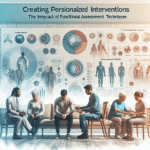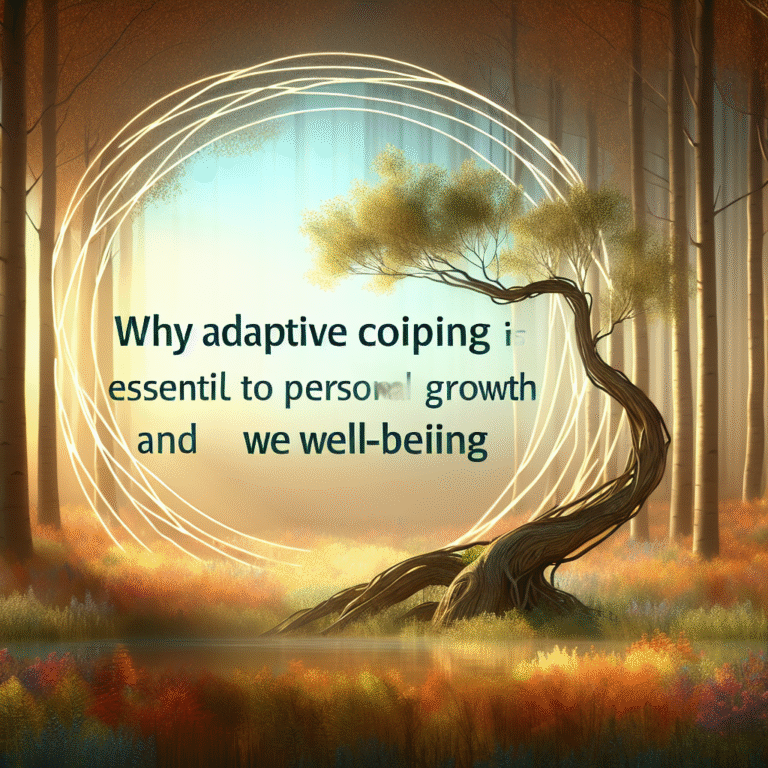
Introduction
Imagine waking up every day feeling trapped by an invisible barrier—one that fuels not only physical discomfort but emotional turmoil. Chronic illnesses, such as rheumatoid arthritis, fibromyalgia, or autoimmune diseases, can cast long shadows over a person’s mental well-being, creating a cycle that’s difficult to break. Understanding Breaking the Cycle: How to Combat the Emotional Impact of Chronic Illness is essential for anyone affected, whether directly or indirectly. This article explores practical strategies, compelling case studies, and insights to help individuals reclaim their lives amidst the challenges chronic illness presents.
Understanding Chronic Illness and Its Emotional Toll
Chronic illnesses affect millions globally, often leading to anxiety, depression, and feelings of isolation. But why is the emotional impact so profound? Here are the critical factors:
- Uncertainty: Chronic illnesses are often unpredictable, leading to stress and anxiety about the future.
- Social Isolation: Physical limitations can result in reduced social interactions, which can deepen feelings of loneliness.
- Identity Crisis: Many individuals struggle with a sense of loss surrounding their identities, as chronic illness can reshape their roles in personal and professional settings.
The Psychological Cycle of Chronic Illness
Chronic illness often leads to a vicious cycle of emotional distress. For instance, pain and fatigue can limit activities, leading to social withdrawal and increased depression. This, in turn, can exacerbate physical symptoms. Understanding Breaking the Cycle: How to Combat the Emotional Impact of Chronic Illness relies on recognizing and addressing this cycle.
Strategies for Emotional Resilience
1. Building a Support Network
Case Study: Sarah’s Journey to Connection
Sarah, a 34-year-old diagnosed with lupus, felt isolated after her diagnosis. By joining support groups, both online and in person, she found a community that shared her struggles. The connections she formed not only provided emotional support but practical advice that helped her manage her illness.
Analysis: Sarah’s experience emphasizes the importance of community in combating feelings of isolation. Support networks can help validate experiences, provide emotional relief, and share coping techniques.
2. Practicing Mindfulness and Meditation
Mindfulness practices have shown immense benefits in alleviating the emotional burdens associated with chronic illness. Techniques like meditation can help reduce anxiety and foster a more positive outlook.
Case Study: Mark’s Mindfulness Journey
Mark, living with fibromyalgia, began a daily meditation practice. Over time, he noticed reduced anxiety and improved pain management, allowing him to engage more fully in life.
Analysis: Mark’s experience illustrates how the practice of mindfulness can alter one’s relationship with chronic pain, reducing emotional stress and enhancing coping capabilities.
Table 1: Benefits of Mindfulness for Chronic Illness
| Benefit | Explanation |
|---|---|
| Reduced anxiety | Decreases stress and racing thoughts |
| Improved focus | Enhances ability to engage with life |
| Better pain management | Alters perception of pain |
3. Cognitive Behavioral Therapy (CBT)
CBT is a structured, goal-oriented therapy that helps individuals challenge and change negative thought patterns.
Case Study: Emily’s Emotional Transformation
Emily, who suffers from rheumatoid arthritis, engaged in CBT, which allowed her to unravel her anxiety regarding her illness. As she learned to replace negative thoughts with positive affirmations, her overall mental health significantly improved.
Analysis: Emily’s success showcases the effectiveness of CBT in modifying detrimental thought patterns that can accompany chronic illnesses.
4. Lifestyle Adjustments
Nutrition and Physical Activity
Eating a balanced diet and engaging in tailored physical activity can significantly impact mental well-being.
- Nutritional Elements: Omega-3 fatty acids and antioxidants can support brain health.
- Exercise: Regular, moderate exercise can release endorphins, enhancing mood.
5. Setting Manageable Goals
For many, chronic illness can make daily tasks feel insurmountable. Breaking tasks into smaller, achievable goals can create a sense of accomplishment and control.
Case Study: John’s Goal-Setting Strategy
John, battling chronic fatigue syndrome, created a daily list of small, manageable tasks. By celebrating his achievements, however minor, he cultivated a more positive outlook on his abilities.
Analysis: John’s approach demonstrates that goal-setting can motivate individuals and foster a sense of agency despite the limitations placed by chronic illness.
Creating a Positive Mindset
The Importance of Gratitude
Fostering a sense of gratitude can provide a significant buffer against emotional disturbances caused by chronic illness. Research suggests that practicing gratitude can shift focus from what is lost to what is still beneficial in one’s life.
Case Study: Karen’s Gratitude Practice
Karen began a daily journal where she wrote down three things she was grateful for each day. This practice shifted her focus, leading to improved mental health and a more resilient outlook.
Analysis: Karen’s experience highlights how gratitude can be a key component in emotional resilience, aiding in Breaking the Cycle: How to Combat the Emotional Impact of Chronic Illness.
Conclusion
Chronic illness is a complex, challenging landscape, but it is possible to break the cycle of emotional distress by employing strategic coping mechanisms. Building a support network, practicing mindfulness, leveraging CBT, making lifestyle adjustments, and cultivating gratitude can all contribute to improved emotional well-being.
As you navigate this journey, remember that you are not alone. Use the insights provided here to inspire action and reclaim control over your life.
FAQs
1. How can I find a support group for my condition?
Look for local or online groups through non-profit organizations or social media platforms. Many communities offer resources specifically designed for chronic illnesses.
2. What are some effective mindfulness techniques for beginners?
Begin with short guided meditations or breathing exercises. Apps like Headspace or Calm can provide structured guidelines.
3. How long does Cognitive Behavioral Therapy take to show results?
Results can vary, but many individuals notice improvements within a few weeks of consistent sessions.
4. Are there specific diets recommended for chronic illness sufferers?
While there is no one-size-fits-all, diets rich in whole foods, lean proteins, vegetables, and healthy fats are generally beneficial. Consulting a nutritionist may also help tailor a plan to individual needs.
5. Can I still exercise if I have a chronic illness?
It is often beneficial to engage in light to moderate exercise, but it’s crucial to consult your healthcare provider to develop a safe and suitable routine.
Utilizing these strategies can significantly enhance emotional resilience and lead to a fulfilling life, despite the challenges posed by chronic illness. Embrace the journey, and break the cycle!















